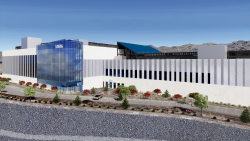The X-37B program was developed as part of a partnership between the US Air Force’s Rapid Capabilities Office and the US Space Force.
Current plans call for the United States Air Force to allocate $3.5 billion in its fiscal year 2026 (FY26) budget to the Boeing F-47. This sixth-generation manned fighter is the centerpiece of the Next Generation Air Dominance (NGAD) program. However, it is not the only Boeing-led effort that can expect to see sky-high funding.
As part of President Donald Trump’s “One Big Beautiful Bill Act,” $1 billion will be used to fund the United States Space Force’s X-37B Orbital Test Vehicle (OTV). The reusable unmanned spacecraft concluded its seventh mission on March 7, landing at Vandenberg Air Force Base (AFB), California, after spending 434 days in orbit.
Boeing has not disclosed how the money will support the program, and the Department of the Air Force has not shed any light on the matter, either.
“The USSF X-37B program supports technology risk reduction, experimentation, and operational concept development for future re-usable space vehicles,” USAF Colonel Lori Astroth, public affairs deputy director for space within the Secretary of the Air Force Office of Public Affairs at the Pentagon, said in a statement to the media.
The X-37B Completed Seven Missions
Neither Boeing nor the US Space Force has confirmed when the next OTV mission could occur. The first, lasting 224 days, began in April 2010 and concluded in December of that year. Each subsequent mission has been longer than the previous one, until OTV-7, which was the second shortest.
It spent half as much time in orbit as OTV-6, which was launched on May 17, 2020, and only returned to Earth 908 days later on November 12, 2022.
In 2020, the X-37B received the Robert J. Collier Trophy for advancing the performance, efficiency, and safety of air and space vehicles.
Why Was the X-37B Program Developed?
The X-37B program was developed as part of a partnership between the US Department of the Air Force’s Rapid Capabilities Office and the US Space Force. Aerospace giant Boeing was charged with designing and manufacturing the spaceplane, and it continues to provide program management, engineering, testing, and mission support from sites in Southern California, Florida, and Virginia.
The program initially began in 1999 when NASA sought to construct two vehicles: an Approach and Landing Test Vehicle (ALTV) and an Orbital Vehicle. It was transferred to the military in 2004, specifically to the Defense Advanced Research Projects Agency (DARPA), at which point it became a bit more secretive. In 2006, DARPA finished the ALTV part of the program, while the Orbital Vehicle originally envisioned by NASA was never built.
The X-37B resembles NASA’s now-retired space shuttle. However, it is significantly smaller, measuring just 29 feet (8.8 meters) from nose to tail, while the space shuttle was 122 feet (37 m) long. Moreover, whereas the space shuttle was piloted, the X-37B is autonomous.
Unlike the Space Shuttle program, which had garnered its moment in the spotlight, the unmanned X-37B is a much more secretive project—at least as secretive as a space launch can be. However, once the X-37B is in space, no one outside the Pentagon knows what it is doing or why.
The Department of the Air Force certainly did not disclose past payloads, apart from confirming that they were not weapons and were required for scientific study. Boeing has confirmed that the OTV has served as a testbed for new technologies and to develop new training environments.
The most recent mission, albeit one of the shortest, was used to carry out an “aerobraking maneuvers, using Earth’s atmosphere to slow and change its orbit while conserving fuel.”
Even before the aerobraking test was carried out, the OTV-7 marked another first for the X-37B. Whereas the first five missions employed Atlas V rockets manufactured by United Launch Alliance, a joint venture between Boeing and Lockheed Martin, the sixth mission flew on SpaceX’s Falcon 9 booster, reportedly one of the most powerful launch vehicles in existence.
About the Author: Peter Suciu
Peter Suciu has contributed over 3,200 published pieces to more than four dozen magazines and websites over a thirty-year career in journalism. He regularly writes about military hardware, firearms history, cybersecurity, politics, and international affairs. Peter is also a Contributing Writer for Forbes and Clearance Jobs. He is based in Michigan. You can follow him on Twitter: @PeterSuciu. You can email the author: [email protected].
Image: Wikimedia Commons.

















